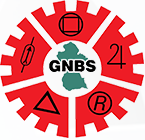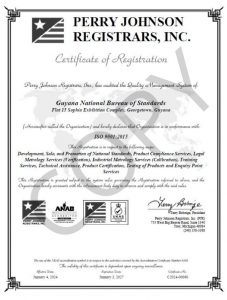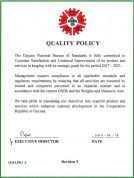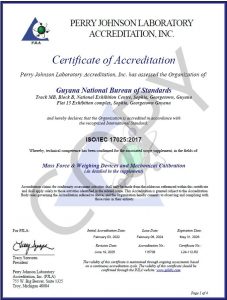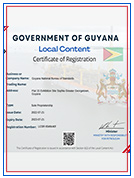Have you ever stopped to consider the many things you measure on a daily basis? We simply cannot exist without measurement because it permeates every aspect of human life. Time, size, distance, speed, direction, weight, volume, temperature, pressure, sound, energy – these are among the many aspects we measure regularly. The International System of Units or SI Units are a means of measurement accepted globally and applicable in daily life.
Measurements have always been a crucial aspect of society but for it to be meaningful, a standard system of units must be used. The International System of Units (Metric System), established in 1960 by the 11th General Conference on Weights and Measures, comprise of base units with values that are used to take measurements all over the world. For example, the kilogram which is used to measure mass or solid items. The name SI Units is used synonymously with the metric units.
The Metric System has been the legal system of measurements in Guyana since 2002 and the Guyana National Bureau of Standards (GNBS), as the organisation mandated to ensure accurate measurements in trade, remains committed to offering guidance to stakeholders within the various sectors and consumers to ensure the adoption and correct use of the legal system of measurement during daily activities.
The SI System has been the Universal System of Measurement utilised, particularly in areas of scientific research, manufacturing, and trade. It is used in multiple disciplines from scientific to technological. Knowing how to read and use the Metric System reduces conversions to alternative measurement systems, improves communication and ensures accuracy.
Aside from the kilogram (kg), the Metric System consists of six other base units which are the Metre (m), Mole (mol), Second (s), Candela (cd), Kelvin (K) and Ampere (A). The decimal system of weights and measures allows for easy conversion between some units simply by multiplying or dividing by 10, 100 and 1000. When multiplying, these are denoted by the prefixes deci, centi and kilo, respectively. For example, 1000 grams of sugar = 1 kilogram of sugar.
In daily life, the Metre measures the length of an object, Mole measures the number of particles in a substance, Second measures the time, Candela measures the luminosity of an object, Kelvin (273K = 00C) measures the temperature of an object, and Ampere measures electrical current.
The Metric Units used for measuring liquids is also referred to as measurement by volume, which is referred to the space occupied by an object and is measured in cubic metres. However, the Litre which is a unit of Volume is denoted as L and is used especially for measuring liquids.
Thelitreis used for measuring intermediate and large amounts of liquids, such as fuel, juices, water, and cooking oil. One litre is equal to one and three quarters of a pint. Another commonly used unit is the Millilitre (mL), which is used for measuring very small amounts of liquids including medicine and soda. One thousand millilitres are equal to one litre.
Because the Metric System is set to prevail as the standard measurement system used throughout the world, those who do not adopt it and continue to use non-metric units will be limited in their transactions or be left behind globally.
As such, to promote the implementation of the Metric System locally, the GNBS conducts regular outreaches, sensitization sessions, school lectures, radio and television programmes to ensure every citizen adopts and commits to the use of the Metric System daily.
Do not be left behind, for more information on understanding the use of the International System of Units, reach out to the GNBS today on Telephone numbers: 219-0064 or 219-0065, or visit the GNBS website: www.gnbsgyorg. You can also WhatsApp us on +592 692 4627.


